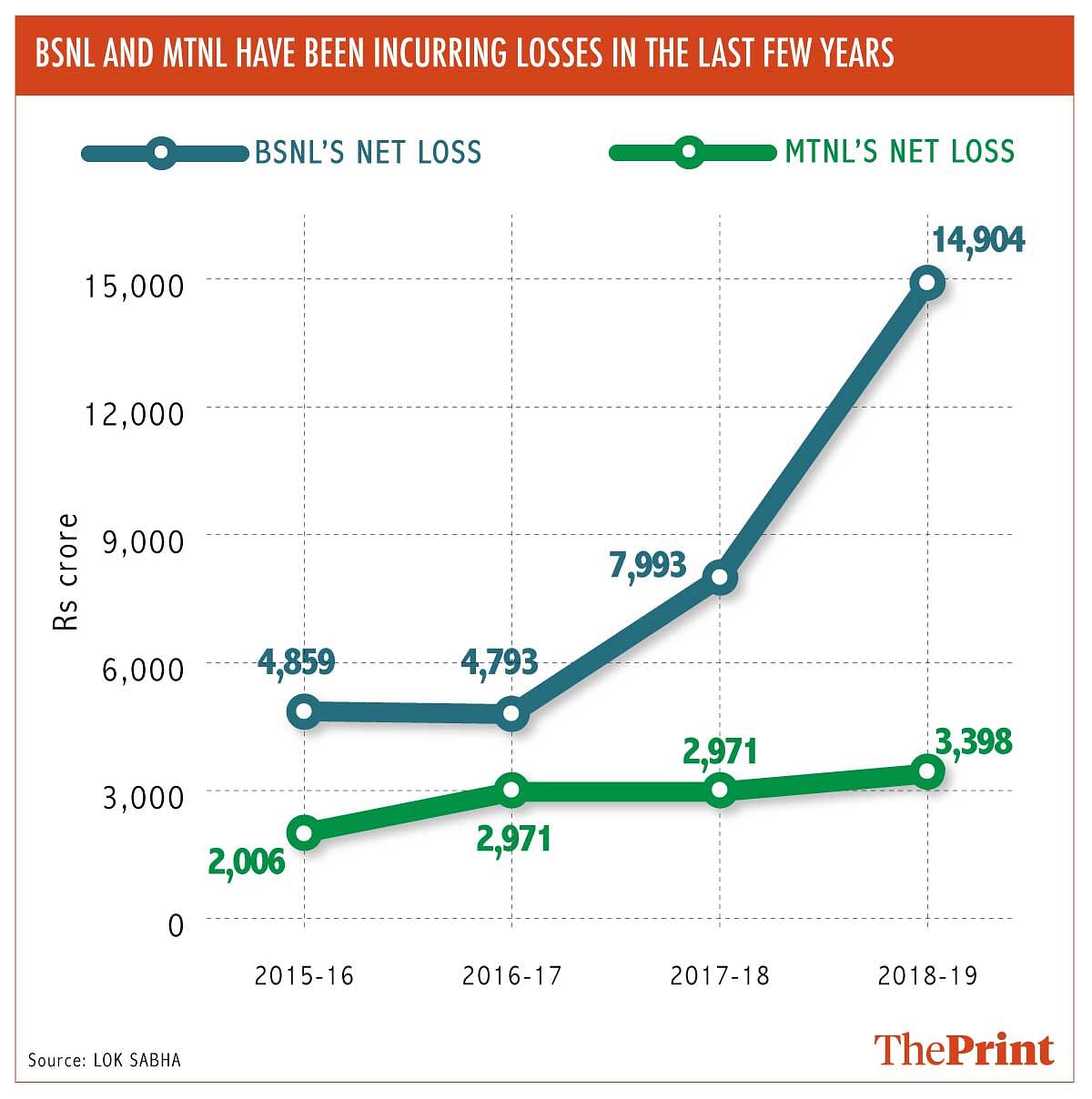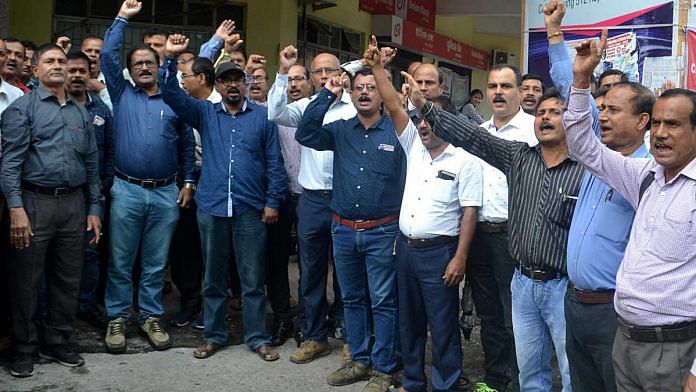New Delhi: The Narendra Modi government’s bid to shed flab at public sector firms has got off to a positive start — more than 92,000 employees of Bharat Sanchar Nigam Ltd (BSNL) and Mahanagar Telephone Nigam Ltd (MTNL) have opted for the voluntary retirement scheme, making it among the most successful early retirement schemes to be rolled out in years.
Of the 1.5 lakh employees in BSNL, more than one lakh were eligible to apply for the scheme — announced by the government for employees between the age of 50-60 years. The corresponding figure for MTNL was 16,300 out of 18,800 employees.
The scheme, which closed Tuesday, will ensure payouts starting from Rs 30 lakh to nearly Rs 1 crore, depending on pay scale and designation. It was announced at a time when the public sector telecom firms were struggling to remain competitive in the face of aggressive competition from the private sector. They were even unable to pay salaries on time.

The Modi cabinet approved a Rs 69,000 crore revival plan for BSNL and MTNL, which would include restructuring of existing debt by raising bonds with sovereign guarantee, reducing employee costs through a VRS scheme, monetisation of assets, allotment of 4G spectrum, and in-principle approval their merger.
A BSNL spokesperson did not respond to repeated requests from ThePrint for comment.
Also read: Modi govt considers bailing out BSNL, MTNL: Wise to waste taxpayers’ money on sinking PSUs?
How golden handshake schemes have fared
This is not the first time governments have used the VRS route to retire employees. In the aftermath of liberalisation in 1991, many state-owned firms found it difficult to compete with the private sector. Most of them were overstaffed and the presence of “excessive manpower” was proving to be a major stumbling block in their attempt to regain their lost viability, according to a 2001 Parliament committee report on public sector enterprises.
This necessitated cutting down on the employee strength through the VRS route. Many state-owned firms like Steel Authority of India Ltd, BPCL and ONGC used it, but with limited success. Around 37,000 employees of state-run firms opted for VRS from 1992-93 to 1998-99.
The only VRS scheme that was an unequivocal success was for employees of state-owned banks in 2000-01. The golden handshake saw around 80,000-1,00,000 employees opting for the VRS route.
“The success of a VRS scheme depends on three factors — how attractive is the VRS package, the future of the company in which the employees are working, and the age of the employees,” former Union finance minister Yashwant Sinha explained.
“If the employees realise that the future of the company is gloomy, the response to the VRS package will be encouraging. Employees with around 2-3 years of service left and those in the middle of their careers are more likely to opt for the scheme.”
Also read: Starting with BSNL & MTNL, India’s new govt must bring bankruptcy process to public sector
Employees apprehensive
According to the fine print of the BSNL VRS scheme, employees would get an ex-gratia amount equal to 35 days’ salary for each completed year of service, and 25 days’ salary for the years left until retirement.
“I have only two years remaining for retirement. So I have opted for the VRS. As it is, salary is not coming on time. I thought it was better to take the package and leave now while I am still getting some money. I can put the money into a fixed deposit,” said one employee working in Delhi who did not wish to be identified.
Despite the fact that many have opted for the VRS scheme, apprehensions remain about the promised payouts.
“I am 56 years old, and the way the package is structured, I won’t suffer from much loss opting for it. However, will the government stick to its promise and give us the promised phase-wise payouts? If they have money, why are they not paying us our salaries?” asked Ansar Ali, a BSNL employee based in Meerut.
Sources said the salary for October was released only Wednesday, a day after the VRS scheme closed.
Ali added that the company, despite deducting contributions towards general provident fund and loan instalments, is not depositing them into the respective accounts.
Employee unions have also resisted the government’s move, as they want greater clarity on the applicability of pay revision on the payouts.
“Our salary is being delayed since February. There is a gap of at least one month now in the receipt of last salary. When salary won’t come on time, the staff would obviously get interested in resigning and opting for VRS. Moreover, we are being threatened with transfers to places like Andaman and Nicobar Islands,” said Swapan Chakraborty, deputy general secretary of the BSNL employees’ union.
Apart from relieving permanent employees, BSNL is also retrenching contractual workers who do a variety of activities, including sweeping, cable digging and maintenance.
“Over 2,000 of these workers have been retrenched in Kerala without giving the pending wages of last 10 months. Approximately Rs 130 crore of casual workers’ salary is pending with BSNL,” said K. Mohanan, all India secretary of the BSNL Casual Contract Workers Federation.
Also read: BSNL employees get February salary but their woes aren’t over, blame Modi govt for cash crunch



